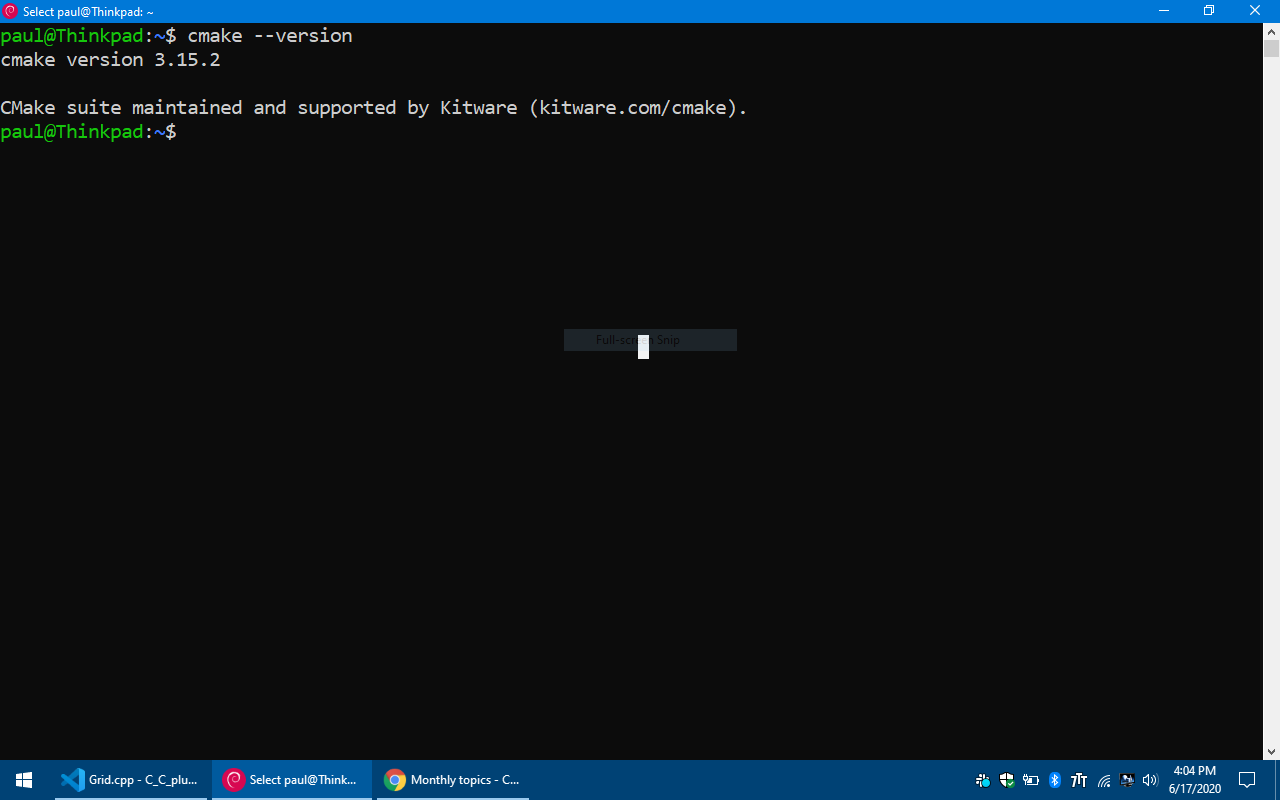

- #Cmake linux install how to#
- #Cmake linux install mp4#
- #Cmake linux install install#
- #Cmake linux install portable#
Open a new terminal ( CTRL+ALT+T) and then run the following commands.
#Cmake linux install install#
I will install FFmpeg from the default repositories.

Let’s start with the installation of the FFmpeg framework in Ubuntu-based distributions. Since the FFmpeg packages are offered for the most used Linux distributions and the installation will be relatively easy.
#Cmake linux install how to#
How to Install FFmpeg Multimedia Framework in Linux In the next part, we will practice with some of the FFmpeg multimedia framework tools, but before doing that we have to install them in our Linux box.

The above command is only useful for explanation, it is not recommended to be used in practice because the codec, bitrate, and other specifics are not declared. # ffmpeg -i Lone_Ranger.mp4 Lone_Ranger.avi
#Cmake linux install mp4#
The following command will convert your mp4 file into an avi file, simple as that. Let me take an example, a very simple one. There are many other practical things that you can do with the help of the FFmpeg framework such as converting your wav file to an mp3 one, encode and decode your videos, or even scale them.Īccording to the official website, FFmpeg is able to do the following. I am very sure you will find this framework very useful when you would like to do some digital audio and video streaming or recording. The FFmpeg framework offers high security and the reason for this is the seriosity of the developers when they review the code, it is always done with security in mind. According to the description of FFmpeg on the official website, the reason for having such a great multimedia framework is the combination of the best free software options available. This framework is really powerful due to the diversity of available tools, that provide the best technical solution for the user.
#Cmake linux install portable#
For example, the ffplay is a portable media player that can be used to play audio/video files, ffmpeg can convert between different file formats, ffserver can be used to stream live broadcasts and ffprobe is able to analyze multimedia stream. That’s it, now you have the latest version of CMake installed on your Ubuntu Linux machine, as you can see from the output of the cmake -version command below.FFmpeg is one of the best multimedia frameworks that contains various tools for different tasks. (Note: replace v3.20.2 with the version you want to install, see the CMake download page for a list of versions) sudo apt install build-essential libssl-dev Run the following commands to download, compile and install CMake: Advertisements This can take much longer, depending on how powerful your machines processor is. The second option is to download the source code from the CMake website and compile it on your Linux machine. You can check to see if it’s installed by running: cmake -version Install it with Snappy by running the following command: sudo snap install cmake -classic Using the Snappy package manager is the quickest and easiest way to install the latest version of CMake on Ubuntu Linux. Run the following commands to remove it: sudo apt remove -purge cmakeĪs of writing the latest version of CMake is 3.20.2 which can be installed using one of the following two options: Remove old versionīefore we begin, you’ll want to remove any previous versions of CMake that were installed with APT. This tutorial shows you how to install the latest version so that you can build software that requires newer CMake features. When you install CMake with APT, you’ll notice it installs an older version. Perfect for development environments and practice labs. Run Linux, macOS, vSphere and more on a single PC or Mac. Run Multiple Operating Systems on PC and Macĭownload VMware's Powerful desktop virtualization tool for Developers and IT Professionals.


 0 kommentar(er)
0 kommentar(er)
